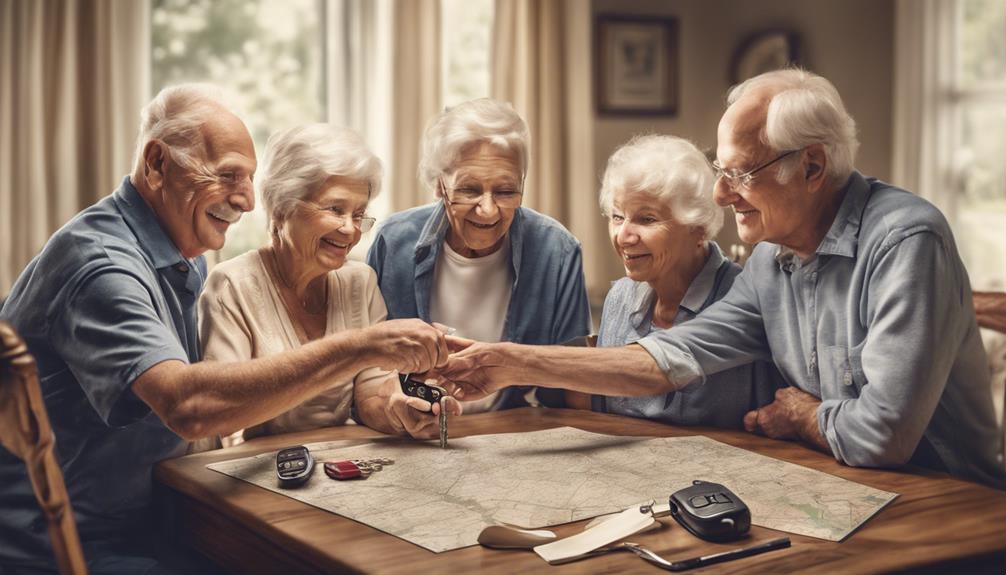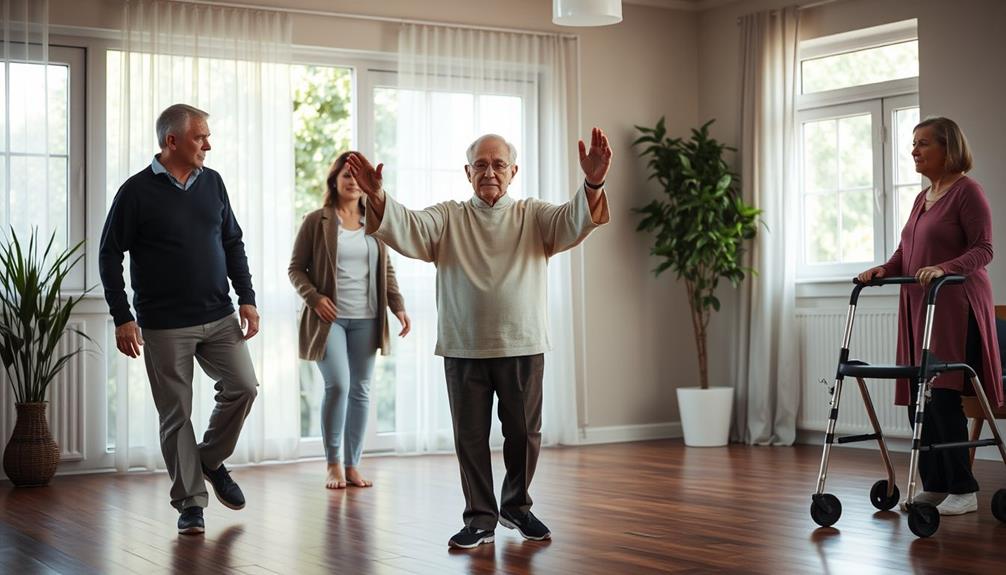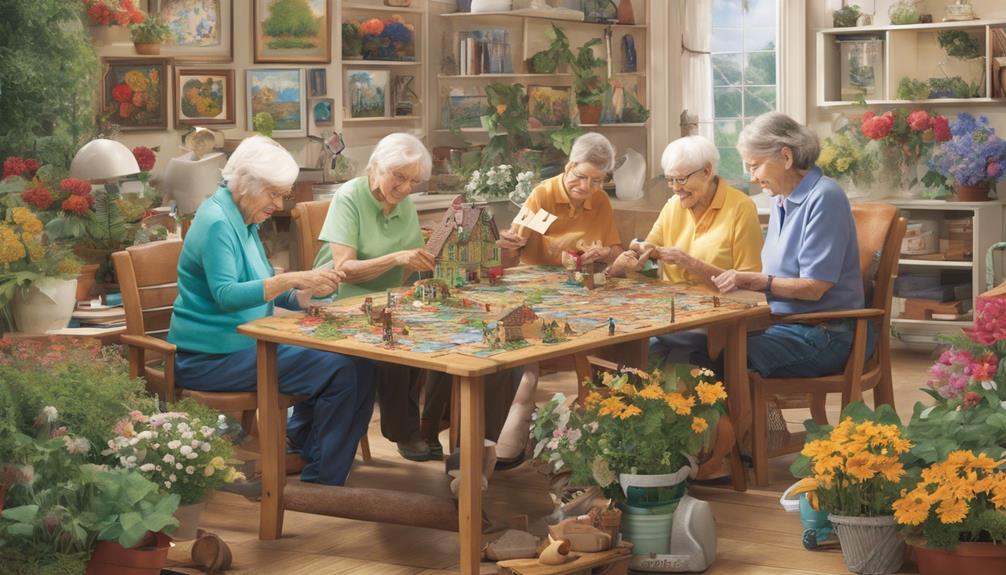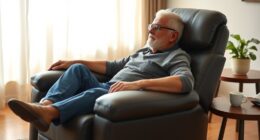As we age, our driving abilities may change, making it important to recognize signs of risky behaviors like ignoring traffic signals or having difficulty staying in lanes. Aging impacts reaction time, vision, and cognitive functions, affecting decision-making on the road. Starting early discussions with loved ones about retiring from driving can lead to safer alternatives like transportation services. Seeking support from resources such as NHTSA and AARP can offer guidance on moving to new transportation options. Prioritizing safety concerns through checklists and open communication helps in maintaining independence and well-being. Understanding when to retire the keys is critical for everyone's safety and comfort.
Key Takeaways
- Monitor driving behaviors for signs of risk like ignoring traffic signals.
- Regularly assess physical and cognitive changes affecting driving abilities.
- Initiate open dialogues early to discuss concerns and explore options.
- Seek support from resources like NHTSA, AARP, and driving rehabilitation specialists.
- Prioritize safety by using checklists, maintaining open communication, and addressing health factors.
Signs of Risky Driving Behaviors
When evaluating older drivers, identifying signs of risky driving behaviors is essential for ensuring road safety and addressing potential concerns promptly. It's vital to pay attention to warning signs such as ignoring traffic signals like red lights or stop signs, as this could indicate a decline in driving abilities.
Difficulty maintaining lane position is another red flag that suggests potential driving issues in older adults. Additionally, visible car damage such as scrapes or dents may point towards compromised driving skills in the elderly.
If older drivers are getting lost in familiar places or showing confusion while driving, these are clear warning signs of risky driving behaviors that shouldn't be ignored. Finally, poor judgment during left-hand turns can be a significant red flag for unsafe driving practices in aging individuals.
Impact of Aging on Driving Abilities
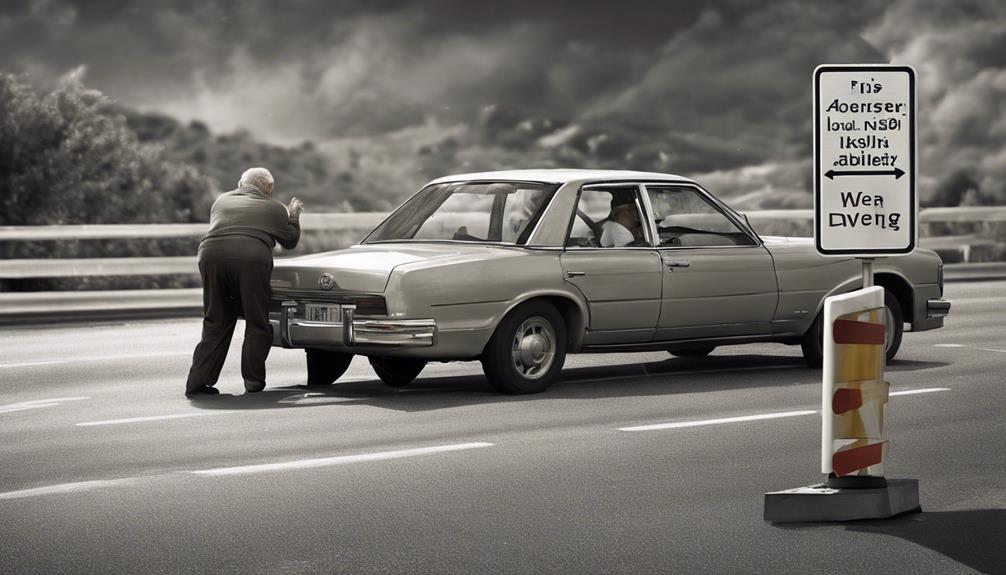
As we get older, our reaction time may slow down, making it harder to respond quickly to unexpected situations on the road.
Changes in vision are common with age, affecting our ability to see road signs, pedestrians, and other vehicles clearly.
Cognitive decline can impact memory, decision-making, and concentration, all of which are vital for safe driving.
Aging and Reaction Time
Age-related changes affecting reaction time underscore the significance for older drivers to evaluate their driving abilities. As we age, our mental processing speed and physical function may decline, impacting how quickly we react to road situations. Research indicates that reaction time slows with age, particularly after 70, which can compromise driving safety. Health issues and medications can exacerbate these effects, further impairing reaction time among older adults on the road. Understanding the impact of aging on reaction time is essential for older drivers to make informed decisions about their driving capabilities.
| Age-Related Changes | Impact on Driving Abilities | Recommendations |
|---|---|---|
| Decline in reaction time | Slower responses to road hazards | Consider taking a defensive driving course |
| Reduced mental processing speed | Difficulty making quick decisions | Avoid driving during peak traffic hours |
| Physical function decline | Challenges with coordination | Exercise regularly to maintain physical health |
Vision Changes With Age
Vision changes with age impact the driving abilities of older adults, highlighting the importance of regular eye exams for maintaining road safety.
As our aging parents grow older, their driving skills may be affected by age-related vision issues. Conditions like cataracts, glaucoma, and macular degeneration can impair visual acuity, making it harder to see clearly while driving.
Reduced depth perception and peripheral vision can also impact their ability to judge distances and react to sudden changes on the road. Additionally, diminished night vision in seniors can pose challenges when driving in low-light conditions.
Hence, it's critical to encourage aging parents to undergo routine eye exams to detect and address any vision changes that could affect their driving skills and overall road safety.
Cognitive Decline and Driving
Our aging loved ones may experience challenges on the road due to cognitive decline, which can impact their driving abilities and overall safety. As elderly drivers, it is crucial to understand how cognitive decline can affect our skills behind the wheel. The table below highlights key points related to cognitive decline and driving:
| Factors | Impact on Driving |
|---|---|
| Cognitive Decline | Decision-making and reaction time may be impaired. |
| Age-related Changes | Mental processing, vision, and hearing can decline. |
| Health Challenges and Medication | Certain conditions and drugs can affect driving. |
Being aware of these factors and regularly evaluating our driving abilities can help safeguard our safety and the safety of others on the road.
Initiating Open Dialogues Early
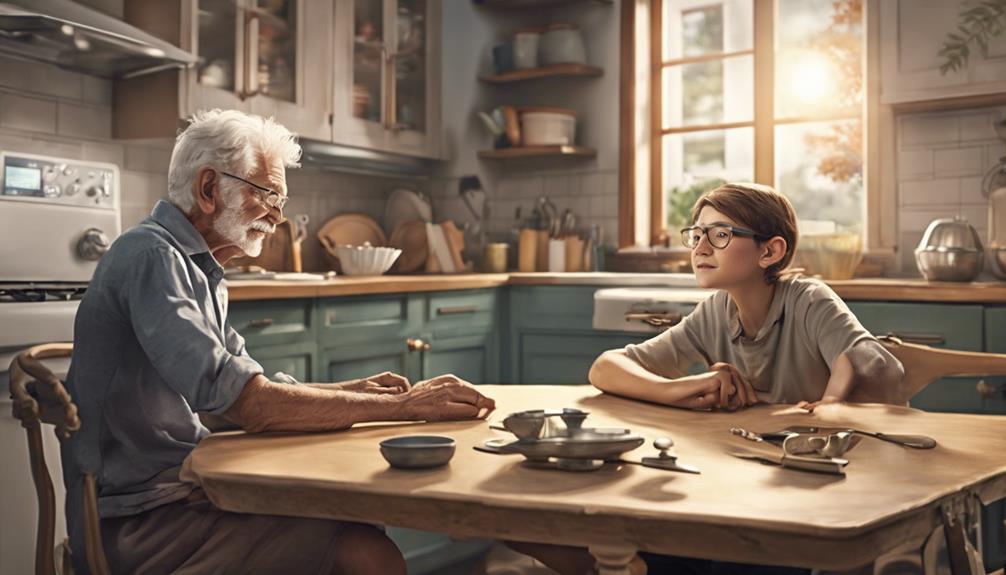
Early discussions about driving safety are essential for older adults and their loved ones. Addressing concerns proactively can prevent accidents and promote safety on the roads.
Starting the conversation early allows for thoughtful consideration and preparation for the future.
Early Communication Importance
We need to kickstart conversations about driving safety with older adults sooner rather than later to guarantee a smooth change and prevent potential risks. When family members initiate these discussions early, it allows for thoughtful planning and consideration of alternative transportation options.
By openly addressing concerns and exploring alternative ways to get around, older drivers and their loved ones can make informed decisions about driving retirement. Early communication fosters understanding, empathy, and proactive decision-making regarding driving cessation.
It's important to have these conversations respectfully and compassionately, ensuring that everyone involved feels heard and supported. By starting these dialogues early, families can work together to create a safe and smooth shift when the time comes to retire from driving.
Family Involvement Strategies
To engage in effective family involvement strategies regarding driving safety for older adults, initiating open dialogues early is crucial. Family involvement in discussions about retiring from driving can have a significant impact on the well-being of older drivers.
By addressing concerns and exploring alternative transportation options before issues arise, families can help guarantee the safety and independence of their aging loved ones. Starting conversations about driving with elderly parents allows for a supportive and understanding approach, promoting a sense of security and planning for the future.
Encouraging open dialogues early on can prevent accidents, facilitate better outcomes, and lead to a smoother handover when the time comes for older adults to retire from driving.
Seeking Support From Resources
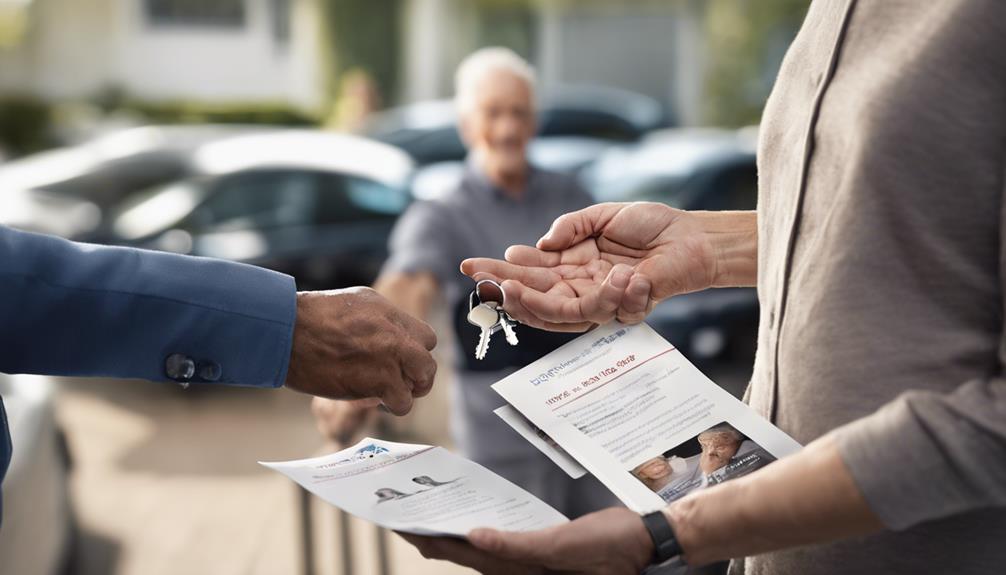
For older drivers and their loved ones, tapping into available resources is essential for enhancing road safety awareness and support. Seeking support from various organizations can provide valuable information and assistance to promote safe driving practices. Here are some ways to access resources for older drivers:
- NHTSA Educational Resources: Utilize free materials from the NHTSA to enhance road safety knowledge.
- Collaboration with AOTA, AARP, AAA, CDC, and ADRS: Seek guidance and support from these organizations to address driving concerns.
- Educational Materials: Access materials tailored for older drivers to help them navigate safely.
- Transportation Plans: Work on creating personalized transportation plans to guarantee safe mobility.
- Driving Safety Discussions: Engage in conversations about driving safety to maintain independence and well-being.
Transitioning to Alternative Transportation Options
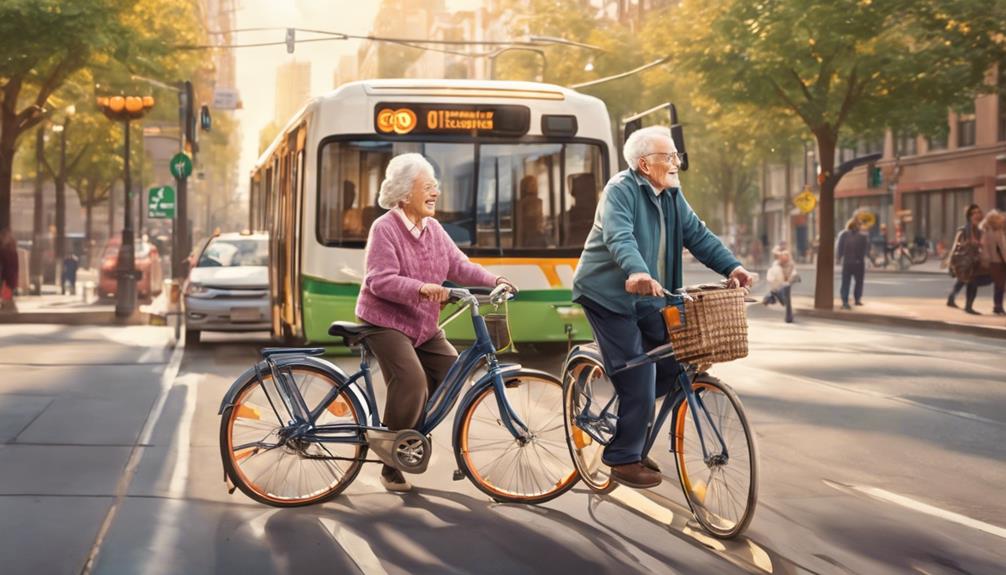
Exploring alternative transportation options can open up new avenues for older adults to maintain their mobility and independence. Utilizing services like Uber can provide convenient transportation solutions for seniors who may no longer drive.
Access to alternative transportation methods is vital for guaranteeing that older adults can still reach essential services like medical appointments or grocery stores. Planning ahead and researching different transportation options can facilitate the shift when elderly drivers decide to stop driving.
Coordination with family members for driving assistance when needed can also facilitate a smoother shift to alternative transportation. By considering various options such as public transportation, ridesharing services, or community transportation programs, older adults can continue to lead an independent and active lifestyle.
Exploring these alternatives proactively is crucial to ensure a seamless shift and to maintain a sense of freedom and mobility for older adults.
Prioritizing Safety Concerns
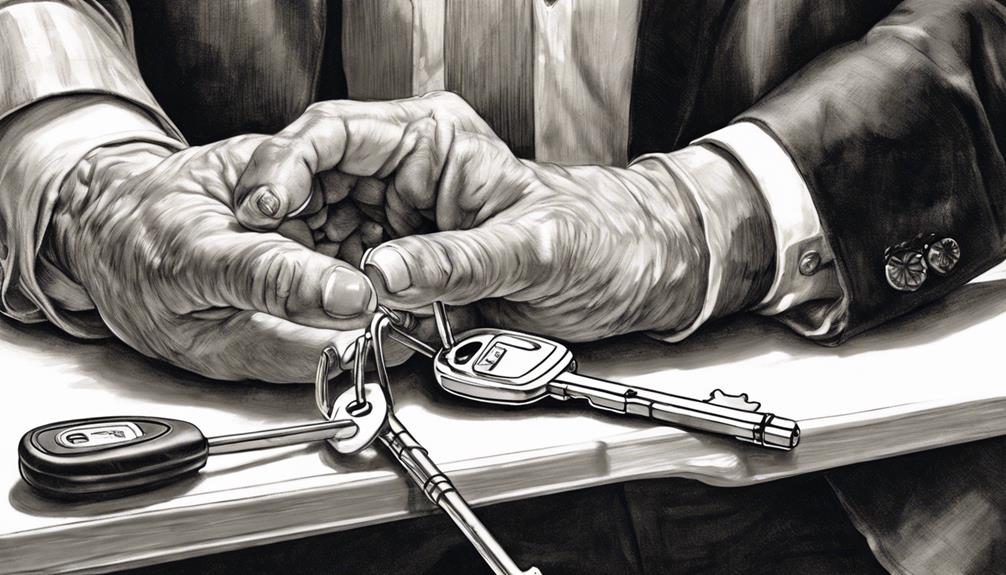
As we address the critical topic of prioritizing safety concerns for older drivers, it's crucial to have a Safety Evaluation Checklist in place.
This checklist helps identify potential risks and areas for improvement in driving skills.
Additionally, maintaining open communication channels with elderly drivers enables discussions about safety measures and adjustments to guarantee safe travels for everyone.
Safety Evaluation Checklist
Assessing health factors that impact driving ability is crucial when prioritizing safety concerns for older drivers. To guarantee safe driving practices, consider the following checklist:
- Driver Rehabilitation: Participate in programs to improve driving skills.
- Medication Monitoring: Evaluate how medications influence driving performance.
- Driving Incidents: Deal with any recent incidents as signs of declining skills.
- NHTSA's Evaluation Questions: Use the 20 questions for identifying safety issues.
- Behavioral Changes: Monitor for changes in driving behavior, car damage, and mileage patterns.
Open Communication Channels
Effective communication plays a vital role in ensuring the safety of older drivers and their loved ones. By maintaining open communication channels, concerns about driving can be addressed proactively, preventing accidents and promoting the well-being of elderly individuals.
Discussing driving safety and potential risks enables older loved ones to make informed decisions regarding their transportation options. Encouraging the consideration of alternative means of getting around can enhance their safety while preserving their independence.
Open conversations about driving not only prioritize safety but also help older adults navigate the delicate balance between autonomy and protection. Keeping communication lines open fosters a supportive environment where safety concerns can be openly discussed and addressed, ultimately benefiting both older drivers and their loved ones.
Understanding Older Driver Independence

Exploring the significance of older driver independence reveals the pivotal role driving plays in seniors' lives. For many older people, driving represents more than just a mode of transportation; it symbolizes freedom, autonomy, and connection to the world around them.
When considering the topic of older driver independence, it's essential to keep in mind the following key points:
- Mobility: Driving allows older individuals to maintain their independence by enabling them to run errands, visit friends and family, and engage in social activities.
- Sense of Control: Being able to drive gives seniors a sense of control over their daily lives and schedules, boosting their confidence and self-esteem.
- Access to Healthcare: Driving provides older people with access to medical appointments and essential healthcare services, promoting their overall well-being.
- Community Engagement: Through driving, seniors can stay actively involved in their communities, participating in events and volunteer opportunities.
- Emotional Well-being: The ability to drive can positively impact older individuals' mental health by reducing feelings of isolation and loneliness.
Understanding these aspects of older driver independence is vital for supporting the well-being and quality of life of elderly drivers.
Addressing Guilt and Discomfort
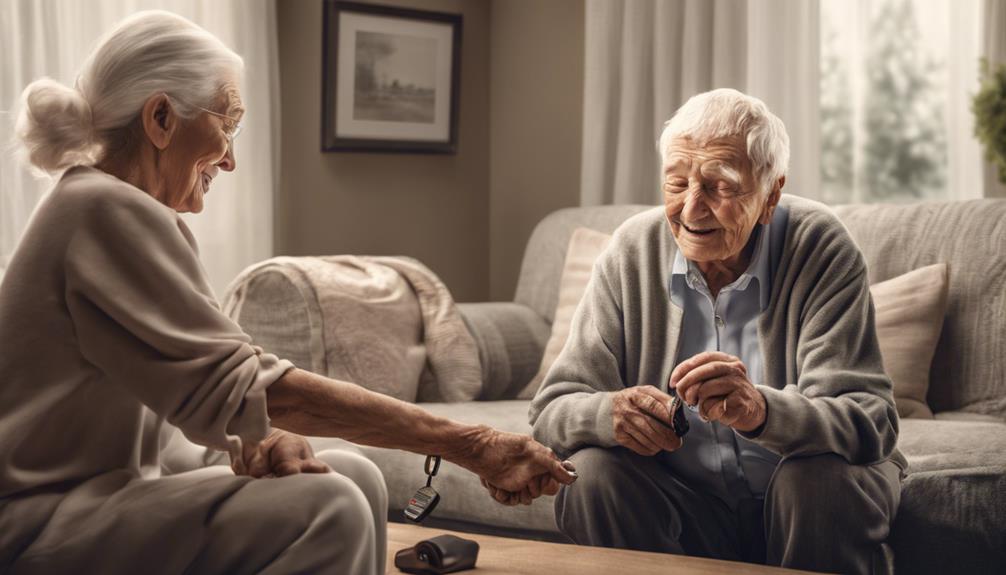
Understanding the emotional challenges associated with retiring from driving is key to supporting older adults through this significant life shift. Many older adults experience feelings of guilt and discomfort when contemplating giving up their driving privileges. It's crucial for seniors to feel a sense of loss and dependence during this shift.
To address these emotions, family members should offer empathy and open communication. By acknowledging the emotional impact of relinquishing driving, loved ones can help older adults navigate through these difficult feelings. Encouraging discussions about alternative transportation options and actively involving older adults in the decision-making process can ease the discomfort associated with retiring from driving.
Recognizing the Need for Change

As we age, it becomes increasingly important to recognize changes that may impact our ability to drive safely. Experts say that being aware of these changes can help us make informed decisions about our driving habits.
Regular check-ups with healthcare providers can help monitor any health challenges that might affect driving skills.
Keep a list of medications and their side effects handy to understand how they might impact driving abilities.
Visiting rehabilitation specialists can provide valuable insights into maintaining or improving physical function related to driving.
Pay attention to any changes in vision or hearing, as these can have a significant impact on driving safety.
Family members and loved ones can also observe for signs of risky driving behaviors and initiate conversations about driving safety when necessary.
Navigating the Transition With Care
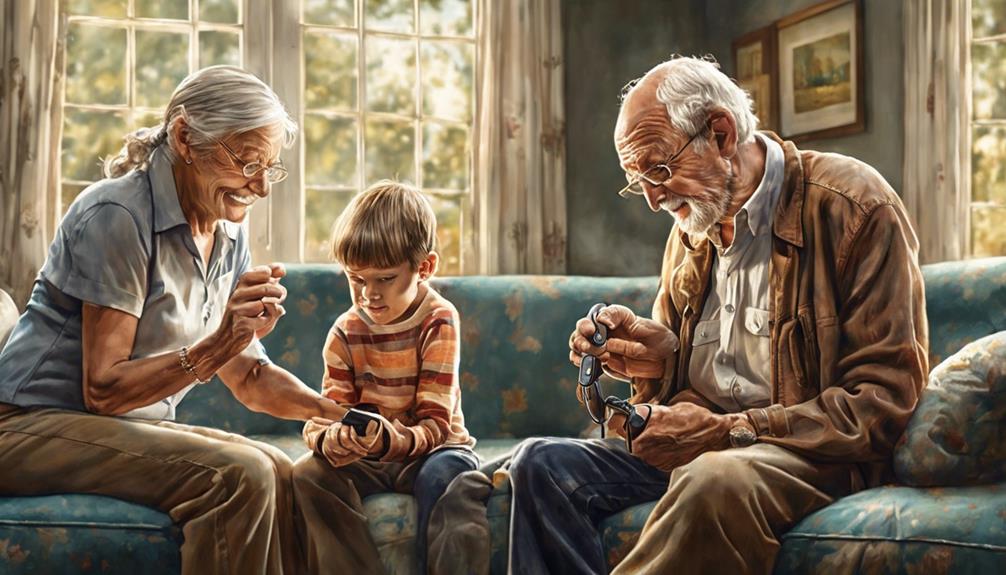
Discussing retirement from driving with older adults requires sensitivity and open communication to navigate the change with care.
It's crucial to understand that for many drivers, giving up their keys can be a challenging and emotional experience. When broaching this topic, approach it with empathy and compassion, acknowledging the significance of driving in their lives. Reassure them that your primary concern is their safety and the safety of others on the road. Gently point out if you’ve noticed specific **signs dementia is affecting driving**, such as confusion at intersections or an inability to follow familiar routes. Suggest working together on a plan that respects their independence while prioritizing safety. Encourage a dialogue where they feel heard and involved in making dementia and safe driving decisions, rather than feeling forced into giving up their independence. Offer alternative transportation options to help them maintain their social connections and daily routines without compromising safety. Together, you can create a solution that prioritizes their well-being while addressing the challenges that come with dementia and aging. By fostering open communication and involving the individual in the decision-making process, you can help ease the transition and reduce feelings of loss. It’s important to consistently revisit the conversation and assess their abilities to ensure dementia and driving safety remains a key focus. Working together, you can find a balance that protects their dignity while ensuring everyone’s safety on the road.
Collaborating with them to create a plan for alternative transportation options can help ease the shift. By exploring services like ride-sharing apps, public transportation, or community programs, you can guarantee they maintain their mobility and independence.
Additionally, involving professional support, such as a driving rehabilitation specialist or counselor, can provide valuable guidance and resources.
Frequently Asked Questions
How Do You Know When an Elderly Person Should Stop Driving?
We notice changes in driving behavior like increased accidents or mileage. Family conversations about discomfort driving can lead to retirement discussions. Using tools such as NHTSA's 20 questions helps assess driving safety. Regular monitoring is essential.
How Do You Tell an Elderly Parent They Can't Drive?
We gently share our concerns, ensuring safety comes first. Compassion guides us as we explore new ways to stay mobile. Together, we navigate this change, prioritizing well-being and independence for our loved ones.
What Is a Problem Associated With Older Drivers?
A common issue with older drivers is the lack of awareness about when to stop driving. This can lead to unsafe conditions on the road. Education and support are essential to address this challenge effectively.
What Should Conversations With Older Adults About Driving Include?
Conversations with older adults about driving should include discussions about their health status and potential impacts on driving abilities. Addressing emotional attachments to driving and creating alternative transportation plans are crucial for a smooth shift.
Conclusion
In summary, it's absolutely vital for older drivers and their loved ones to recognize the signs of risky driving behaviors and have open discussions about shifting to alternative transportation options when needed.
By addressing these challenges with care and seeking support from resources, the safety and well-being of everyone on the road can be guaranteed.
Remember, taking proactive steps towards a safer driving experience is always worth the effort.
